Introduction to Arch Support
Arch support is crucial for maintaining the health and functionality of our feet. It refers to the reinforcement or assistance provided to the natural arches of our feet to ensure they stay strong, stable, and properly aligned. This support is essential for distributing the weight of our bodies evenly across the feet and for absorbing the impact and stress generated during movement, like walking or running. Essentially, it’s like having a strong foundation for a building—arch support helps our feet handle various activities while minimizing discomfort or potential injuries.
Anatomy of the Foot Arch
The foot arch is a remarkable structure composed of bones, tendons, ligaments, and muscles that collectively form an intricate framework supporting our feet. It’s not a singular arch but a complex interplay of three primary arches:
- Medial Longitudinal Arch: This arch, extending from the heel to the ball of the foot, is the most prominent and crucial for weight distribution.
- Lateral Longitudinal Arch: Running parallel to the medial arch, it spans from the heel to the outer edge of the foot, providing additional support.
- Transverse Arch: This arch runs across the midfoot, connecting the other arches and enhancing the foot’s structural integrity.
These arches dynamically adapt to various surfaces and movements, offering flexibility, shock absorption, and stability. The bones forming the arches, including the tarsal and metatarsal bones, are held in place by ligaments and activated by muscles and tendons. This intricate arrangement allows the foot to withstand immense pressure, distribute weight evenly, and adjust to different terrains and activities. Understanding this detailed anatomy helps in comprehending the complexities of how our feet support us in motion.
The Science Behind Arch Support
The science behind arch support delves into the biomechanics and structural dynamics that influence the functionality of our feet. It’s not merely about cushioning or padding; rather, it’s a profound understanding of how our feet work and the mechanisms involved in providing adequate support to the arches.
Arch support is rooted in the intricate anatomy of the foot, comprising bones, muscles, ligaments, and tendons that form the arches. Biomechanics studies the forces and movements involved in weight-bearing activities like walking, running, or standing. It investigates how these forces impact the arches and how proper support can optimize these movements.
When we walk or run, the arches of our feet act as shock absorbers, dissipating the impact and stress generated by each step. The muscles and tendons in the feet and lower legs play a pivotal role in maintaining the arch’s structure and function. Arch support aims to enhance this natural mechanism, providing additional stability and reducing strain on these vital structures.
Understanding the science behind arch support helps in designing effective support systems, such as orthotic insoles or specialized footwear, tailored to individual foot types and needs. By aligning the foot properly and distributing weight evenly, arch support minimizes discomfort, prevents injuries, and contributes to overall foot health.
Benefits of Proper Arch Support
- Alleviating Foot Pain: Adequate arch support helps distribute weight evenly across the feet, reducing strain on specific areas and alleviating common foot pains like plantar fasciitis or arch discomfort.
- Improving Posture and Balance: By providing a stable foundation, arch support assists in maintaining proper posture and balance. It prevents overpronation or supination, which can affect alignment and cause posture-related issues.
- Reducing Strain on Joints: Proper support for the arches minimizes excessive stress on the ankles, knees, hips, and lower back. This reduction in strain can alleviate joint pain and prevent long-term issues.
- Enhancing Shock Absorption: The arches act as natural shock absorbers during movement. Adequate support ensures efficient shock absorption, reducing the impact on the feet and lower extremities.
- Preventing Injuries: By providing stability and reducing excessive movements, arch support lowers the risk of injuries during physical activities or prolonged standing, especially for those with high-impact lifestyles or jobs.
- Supporting Natural Foot Function: Arch support complements the natural movement of the foot, enhancing its natural mechanics and promoting a more efficient gait.
- Improving Comfort: Properly supported arches enhance overall foot comfort, reducing fatigue and discomfort, particularly after extended periods of activity or standing.
- Aiding in Rehabilitation: For individuals recovering from foot injuries or surgeries, arch support can facilitate the rehabilitation process by providing necessary support and alignment.
Understanding and prioritizing proper arch support can significantly enhance comfort, mobility, and overall foot health, leading to a more active and pain-free lifestyle.
Types of Arch Support
- Orthotic Insoles: These are customized or over-the-counter insoles designed to support the arches and provide cushioning. They come in various materials and shapes to suit different foot types and provide personalized support.
- Arch-Supporting Footwear: Shoes designed specifically with built-in arch support offer a convenient way to maintain proper foot alignment and stability. These shoes often have contoured footbeds or added cushioning to support the natural arches.
- Exercises and Stretches: Specific exercises and stretches targeting the muscles and tendons supporting the arches can strengthen these structures. These exercises include calf raises, toe curls, and arch stretches, aiding in enhancing arch support.
- Taping and Bracing: Techniques involving taping or bracing the foot can provide temporary support to the arches, particularly during activities where additional stability is required.
- Arch Support Accessories: Various accessories like arch support sleeves, braces, or straps are available to provide targeted support to the arch area, offering relief from discomfort or strain.
- Custom Orthotics: These are personalized devices designed by healthcare professionals to address specific foot issues or irregularities. Custom orthotics are molded to fit an individual’s foot precisely, offering tailored support and comfort.
Understanding the different types of arch support allows individuals to choose the most suitable method based on their foot type, lifestyle, and specific needs. Each method provides varying degrees of support and comfort, catering to a diverse range of foot conditions and preferences.
Customizable Arch Support
Customizable arch support refers to highly personalized solutions crafted to meet the unique needs of an individual’s feet. Unlike generic, mass-produced arch support products, customizable options are meticulously designed to cater to specific foot conditions, irregularities, or comfort preferences.
The process of creating customizable arch support involves a comprehensive assessment by healthcare professionals, typically podiatrists or orthopedic specialists. This evaluation encompasses an in-depth analysis of the individual’s foot structure, biomechanics, gait patterns, and any existing foot-related issues.
To create a customized solution, various methods are employed. This can include advanced technologies like 3D scanning or traditional methods such as molding techniques to accurately capture the contours and intricacies of the individual’s feet. These impressions or digital models serve as the foundation for crafting specialized orthotic devices or insoles.
The beauty of customizable arch support lies in its ability to address specific concerns, such as high arches, flat feet, or conditions like plantar fasciitis. These tailor-made solutions aim to provide precise alignment, distribute weight evenly, and offer targeted support where needed most.
Moreover, these solutions are not limited to a one-size-fits-all approach. They can be fine-tuned to accommodate varying foot shapes, sizes, and even lifestyle requirements. Whether for daily wear, athletic activities, or specialized footwear needs, customizable arch support offers the flexibility to adapt to diverse preferences and circumstances.
The advantages of customizable arch support extend beyond mere comfort. They can aid in alleviating foot pain, improving stability, enhancing performance during physical activities, and preventing potential injuries associated with inadequate support.
Individuals seeking customizable arch support should engage in a thorough consultation with healthcare professionals. This process ensures that the tailored solution addresses their specific foot concerns and aligns with their lifestyle, promoting optimal foot health and overall well-being.
Addressing Foot Issues with Arch Support
- Plantar Fasciitis: Arch support can alleviate the discomfort caused by plantar fasciitis by reducing strain on the plantar fascia ligament. It helps distribute pressure evenly across the foot, easing the pain associated with this condition.
- Flat Feet: For individuals with flat feet, where the arches collapse or are very low, arch support provides the necessary lift and cushioning. This helps in reducing fatigue, providing better shock absorption, and improving overall foot function.
- High Arches: High arches can lead to excessive pressure on specific areas of the foot. Arch support aids in distributing weight more evenly, reducing strain on these areas and preventing potential discomfort or injuries.
- Overpronation or Supination: Individuals with overpronation (excessive inward rolling of the foot) or supination (outward rolling) can benefit from arch support. It helps in correcting the foot’s alignment, preventing excessive movement, and reducing the risk of related injuries.
- Achilles Tendonitis: Adequate arch support can alleviate strain on the Achilles tendon by promoting proper foot alignment. This can reduce discomfort and support the healing process for individuals with Achilles tendonitis.
- Metatarsalgia: Arch support can assist in reducing pressure on the balls of the feet, relieving pain associated with metatarsalgia, a condition characterized by discomfort in the front part of the foot.
- Shin Splints: Providing proper arch support can help in reducing stress on the lower legs, aiding in the prevention and management of shin splints, a common issue among runners and athletes.
By addressing these foot issues, arch support not only offers relief but also helps in preventing potential injuries or worsening of existing conditions. It promotes better foot mechanics, reduces strain on ligaments and muscles, and enhances overall foot health and comfort.
Choosing the Right Arch Support
- Foot Type Assessment: Start by understanding your foot type—whether you have high arches, low arches, or neutral arches. This can be done through a simple footprint test or consulting a podiatrist for a comprehensive analysis.
- Identify Specific Needs: Determine the specific issues you want to address, such as arch pain, plantar fasciitis, or overpronation. Different arch support options cater to different foot conditions, so knowing your needs is crucial.
- Type of Support Needed: Depending on your foot type and condition, choose between rigid, semi-rigid, or cushioned arch supports. High arches might benefit from more cushioning, while flat feet may require firmer support.
- Custom vs. Off-the-Shelf: Decide whether you need custom-made orthotics tailored to your foot shape or if off-the-shelf options suffice. Custom solutions offer personalized support, but quality off-the-shelf inserts can also provide adequate comfort.
- Shoe Compatibility: Consider the types of shoes you frequently wear. Some arch support products may not fit well in certain shoe styles, so ensure compatibility for seamless integration and comfort.
- Comfort and Fit: Try out different arch support options to gauge comfort and fit. Ensure they provide adequate support without causing discomfort or altering your natural gait.
- Activity-Specific Support: If you engage in specific activities like running or standing for extended periods, opt for arch supports designed for those activities to ensure appropriate support and cushioning.
- Consult a Professional: When in doubt, seek advice from a podiatrist or footwear specialist. They can offer tailored recommendations based on your individual foot characteristics and needs.
By considering these factors, you can make an informed decision and choose arch support that caters precisely to your foot type, addresses specific concerns, and enhances overall comfort and support.
Incorporating Arch Support in Daily Life
- Footwear Compatibility: Opt for shoes that are compatible with Atlas arch support. Look for footwear with removable insoles or ample space to accommodate these inserts comfortably. This ensures a seamless fit without compromising on shoe comfort.
- Gradual Adaptation: Ease into using Atlas arch support by wearing them for a few hours daily initially. This gradual introduction allows your feet to adapt gradually, minimizing any discomfort associated with the adjustment period.
- Precise Placement: Ensure that the Atlas arch support is correctly positioned within your shoes. Proper alignment with your natural arch is crucial to provide optimal support to the midfoot and maintain proper foot alignment and stability.
- Customization for Comfort: Many Atlas arch supports offer customizable features. Take advantage of these options to tailor the support to your specific comfort needs. Adjust the firmness or positioning to best suit your individual requirements.
- Consistent Usage: Incorporate Atlas arch support into your daily routine consistently. Whether at work, during exercise, or leisure activities, consistent use maximizes its benefits and aids in relieving foot discomfort associated with various activities.
- Monitor Progress: Pay close attention to how your feet feel with the Atlas arch support. Observe any reduction in foot pain, enhanced stability, or overall comfort. This monitoring helps in making necessary adjustments for better support and comfort.
- Maintenance and Hygiene: Ensure proper maintenance of the arch supports by keeping them clean and in good condition. Follow manufacturer guidelines for cleaning and replacement to maintain their effectiveness over time.
- Consultation and Adaptation: If you encounter persistent discomfort or issues, seek guidance from a podiatrist or footwear specialist. They can provide valuable insights, offer adjustments, or suggest alternative solutions to ensure optimal foot support and comfort.
By integrating Atlas arch support into your daily routine mindfully and consistently, you pave the way for improved foot comfort, reduced pain, enhanced stability, and overall foot health. This support becomes an invaluable companion, catering to your feet’s needs across various activities and promoting sustained foot well-being.

The Role of Atlas Arch Support in Sports
- Enhanced Stability: During high-impact sports like running, basketball, or tennis, Atlas arch support helps stabilize the foot. It minimizes excessive movement, reduces strain on the arches, and enhances overall stability, allowing athletes to perform with better control and balance.
- Improved Shock Absorption: Athletes often subject their feet to repetitive and forceful impacts. Atlas arch support aids in absorbing and dispersing shock, minimizing the stress on the feet, ankles, and lower limbs. This reduces the risk of injuries such as plantar fasciitis, shin splints, or stress fractures.
- Optimal Foot Alignment: Maintaining proper foot alignment is crucial for athletes. Atlas arch support assists in aligning the foot’s biomechanics, reducing overpronation or supination, and supporting the natural arches. This alignment contributes to efficient movement and reduces the likelihood of injuries caused by misalignment.
- Reduced Fatigue: Athletes often experience foot fatigue during prolonged training or competitions. The support provided by Atlas arch support reduces muscle fatigue in the feet and lower limbs, allowing athletes to perform at their peak for longer durations.
- Injury Prevention: By providing adequate support and stability, Atlas arch support aids in preventing common sports-related foot injuries. It minimizes strain on the ligaments, tendons, and muscles, reducing the risk of sprains, strains, and overuse injuries.
- Customizable Support: Athletes with specific foot conditions or biomechanical irregularities can benefit from customized Atlas arch support. These personalized solutions address individual needs, offering tailored support for optimal performance and injury prevention.
- Versatile Use: Atlas arch support is adaptable across various sports and activities. Whether running, jumping, pivoting, or engaging in agility-based movements, this support system ensures consistent comfort and stability.
- Post-Activity Recovery: Post-exercise, Atlas arch support aids in the recovery process by providing support to fatigued muscles and minimizing strain, promoting quicker recovery between training sessions or competitions.
By incorporating Atlas arch support into sports activities, athletes can significantly enhance performance, reduce the risk of injuries, and maintain optimal foot health. It’s a valuable asset that supports athletes in achieving their athletic goals and sustaining their performance over time.
Myth-busting about Arch Support
- Myth: Arch Support Weakens Foot Muscles: Contrary to belief, appropriately designed arch support does not weaken foot muscles. Instead, it assists the natural biomechanics of the foot, providing necessary support while allowing muscles to function optimally.
- Myth: Everyone Needs Arch Support: Not everyone requires arch support. Individuals with well-aligned feet and no discomfort might not need additional support. Arch support is beneficial for those experiencing foot pain or issues related to their foot structure.
- Myth: Arch Support Can Completely Correct Flat Feet: While arch support can alleviate discomfort associated with flat feet, it may not completely change the foot structure. It aims to provide comfort and support rather than alter the foot’s natural shape permanently.
- Myth: Arch Support Is Only for High Arches: Arch support benefits all foot types, not just high arches. It aids in maintaining proper alignment, reducing strain, and preventing issues regardless of foot arch type.
- Myth: Once You Start Using Arch Support, You Can’t Stop: Arch support can be beneficial temporarily, especially during recovery or when experiencing foot discomfort. However, it’s not necessarily a lifelong requirement for everyone and doesn’t create dependency if used correctly.
- Myth: More Cushioning Means Better Arch Support: While cushioning is essential, more isn’t always better. Proper arch support focuses on providing the right balance of cushioning and stability tailored to individual foot needs.
- Myth: All Arch Support Products Are the Same: Arch support varies in design, materials, and intended purpose. Not all products offer the same level of support or cater to specific foot conditions. Choosing the right support involves considering individual needs and foot characteristics.
- Myth: Arch Support Is Uncomfortable: Arch support designed correctly should not cause discomfort. Initially, there might be an adjustment period, but discomfort or pain could indicate incorrect fit or improper support.
By dispelling these myths, it’s easier to understand the actual benefits and limitations of arch support. Each person’s foot is unique, and the use of arch support should be tailored to individual needs rather than following generalized assumptions.
The Future of Arch Support Technology
- Customization and Personalization: Future developments will likely focus on more advanced customization options. Technologies such as 3D scanning or printing may enable precise mapping of individual foot characteristics, leading to tailored arch support solutions designed specifically for each person’s unique foot structure and needs.
- Smart Arch Support: Integration of smart technology into arch support systems is anticipated. This could involve sensors or embedded devices that analyze foot pressure, gait patterns, and movement in real-time. These insights could aid in creating personalized support and offering recommendations for improved foot health.
- Materials and Innovation: Advancements in material science may lead to the creation of new, innovative materials that offer enhanced support, durability, and breathability. These materials could revolutionize the design of arch support, making them lighter, more flexible, and better suited for diverse activities.
- Biomechanical Insights: Deeper understanding of foot biomechanics and how arch support impacts overall foot health will drive innovation. This knowledge may lead to more targeted and effective support systems that address specific foot conditions or issues with greater precision.
- Incorporation of Sustainable Practices: There might be a shift towards sustainable materials and production methods in arch support technology. Manufacturers may explore eco-friendly materials and manufacturing processes to reduce environmental impact.
- Integration with Footwear: Seamless integration of arch support into footwear is likely to be a focus. Future shoes might come equipped with adaptable arch support systems that can be adjusted or personalized according to the wearer’s needs, offering all-in-one solutions for comfort and support.
- Wearable and Portable Solutions: There might be advancements in portable arch support devices that individuals can easily use and carry, allowing for continuous support and comfort beyond traditional footwear.
The future of arch support technology seems poised to revolutionize the way we support and care for our feet. These advancements hold the potential to provide more tailored, effective, and adaptable solutions, catering to diverse foot types, lifestyles, and specific needs.
WHERE TO BUY
Conclusion
Understanding the science behind arch support is pivotal for holistic foot care. It’s not just about comfort; it’s about maintaining the body’s structural integrity. Investing in proper arch support translates into a healthier and more active lifestyle.
FAQs
1. Is arch support only necessary for individuals with foot pain?
Arch support benefits everyone, as it contributes to overall body alignment and posture, preventing potential issues.
2. Can I use over-the-counter arch support products for specific foot conditions?
While they might offer some relief, customized solutions like custom orthotics are more effective for addressing specific foot issues.
3. How do I know which arch support is suitable for my feet?
Consulting a podiatrist or foot specialist can help determine your arch type and recommend the most suitable support.
4. Are there exercises to strengthen the foot arch?
Yes, various exercises like toe curls, arch lifts, and towel scrunches can help strengthen the foot arch muscles.
5. Can arch support improve athletic performance?
Absolutely. Proper arch support enhances stability and alignment, contributing to better performance and reduced risk of injuries in sports.


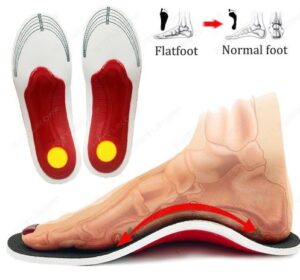
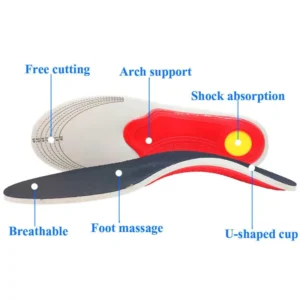




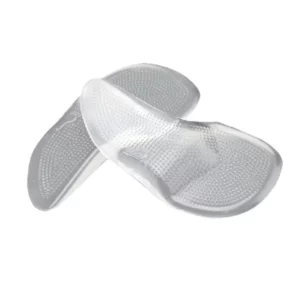


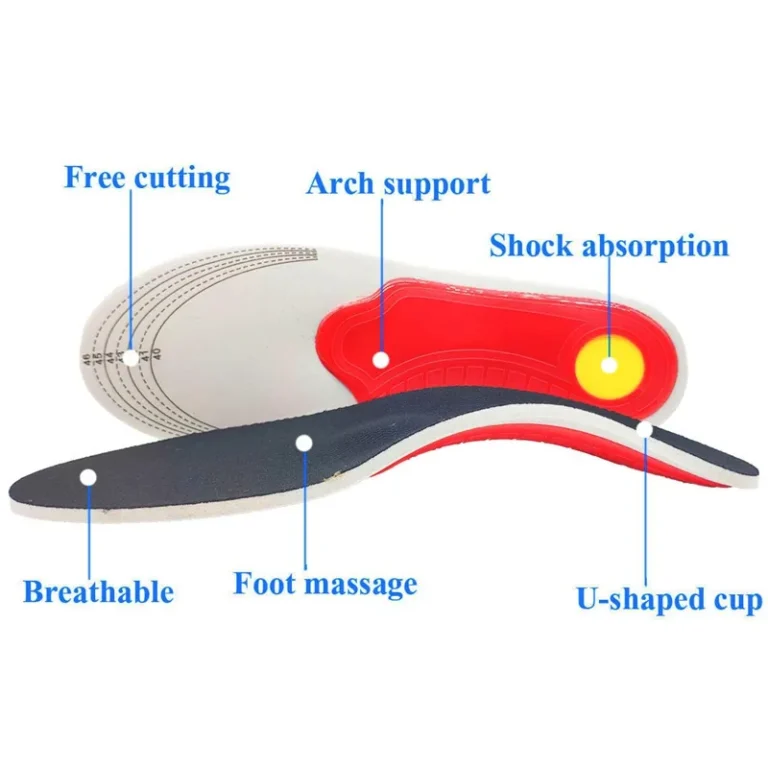




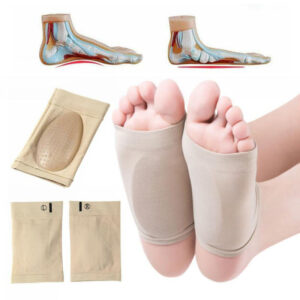



+ There are no comments
Add yours